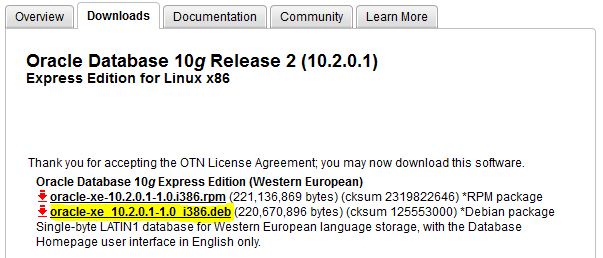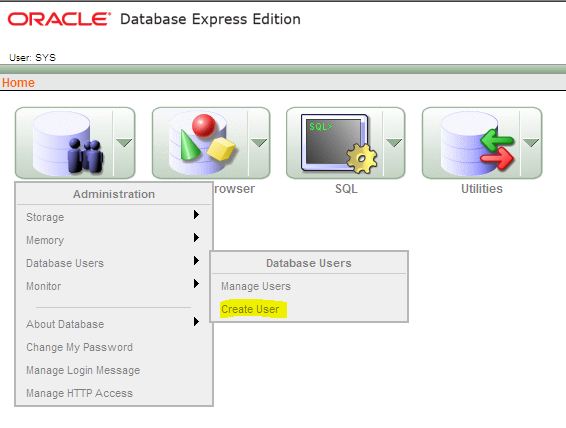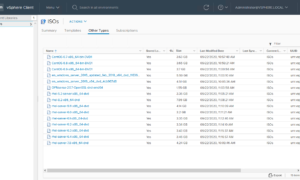(Note: Now that vCD 1.5 has been released this step can be avoided and instead you can use MS SQL 2008 R2 Express if you prefer MS SQL, the only catch is making sure that you allow remote TCP/IP connections to the SQL server)
As the title says this post will cover how to setup our Oracle 10g Database server. There are Windows and Linux binaries available for download on the Oracle website, but this article will only focus on the Linux version, specifically how to set it up on Debian Linux 6. I will assume that you know how to install ESXi because that will be a prerequisite for this step, but I do briefly cover that step in the next article.
Getting the binary
The first task we need to do is register at Oracle.com for a user account. Then we can navigate to the Oracle 10g Express Edition download page here. We will want to get the .deb file, not the .rpm file… if we were installing on Red Hat or CentOS then we would grab the rpm. This file is about 200MB in size to get that started and then while we wait for it to download we can create our Debian virtual machine and get the OS installed.
Installing Debian 6 – i386
Trying to be progressive and stuff I decided to use a 64bit Debian install, but I soon found out that the Oracle binary is for i386 not AMD64. So instead of dealing with installing IA32 libs and all that jazz I just loaded up an i386 VM instead, moral of the story: use i386 not AMD64 Debian for a quick and easy install.
You can download the latest CD-ISO image from here. Then create a new virtual machine, I gave mine 1GB of RAM, 1 vCPU, and 25GB of HDD space. During the install (or after via apt) make sure to install OpenSSH Server so that we can use WinSCP to transfer the Oracle binary over to the new VM. Also make sure to set a static IP address as we wont want this moving around.
Installing Oracle 10g XE
Installation of the database is quite simple, in fact it only takes one command.
dpkg -i oracle-xe_10.2.0.1-1.0_i386.deb
The installer will ask you several questions, I left all of them at their default settings and I specified my SYS/SYSTEM password.
Now, there is one complication with using Debian and no GUI… setting remote HTTP access to Oracle. By default after Oracle is installed it only allows access from 127.0.0.1, so in order to create a new user and get access from my desktop to the Oracle web interface I installed tightvncserver, icewm, and iceweasel on my Debian server so I can VNC in and use Iceweasel (firefox). To install these just type:
apt-get install icewm iceweasel tightvncserver
Then to start a VNCserver type:
vncserver -geometry1024x768
You will need to specify a password for connection but then from your desktop (after installing VNCviewer) just goto <Your Server IP>:1 and put in your password.
From the web interface click Administration ->Database Users->Create User then follow the wizard to create a new user, I gave my user full access since this is a lab only setup.
After you have your new user account created we are ready to start using Oracle with vCloud Director and vCenter server. The next post in this series will explain how to deploy vCenter 5.0 Linux Appliance, and deploy and configure vShield.
![]()



